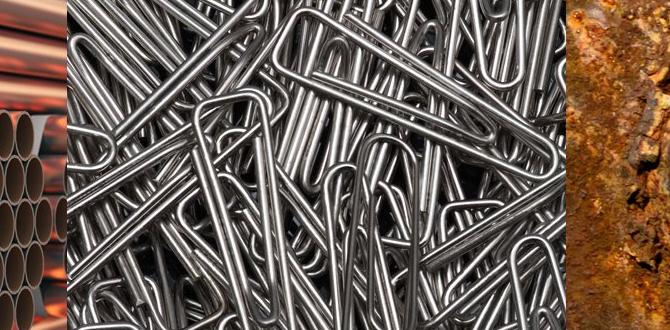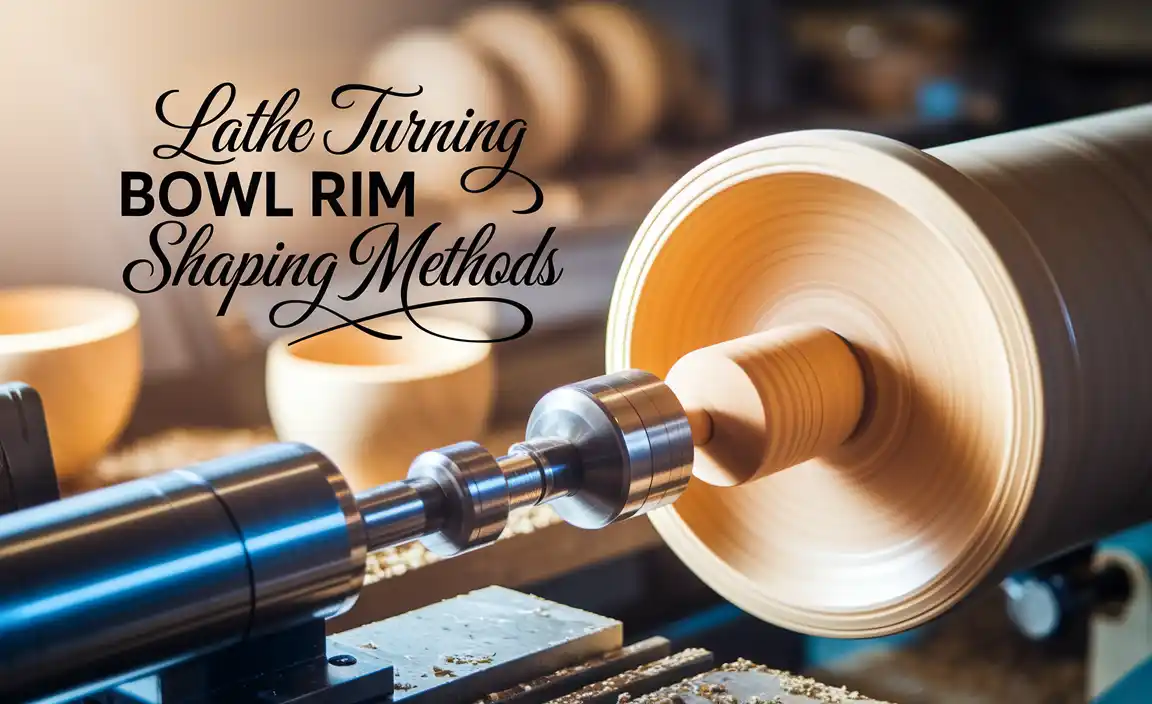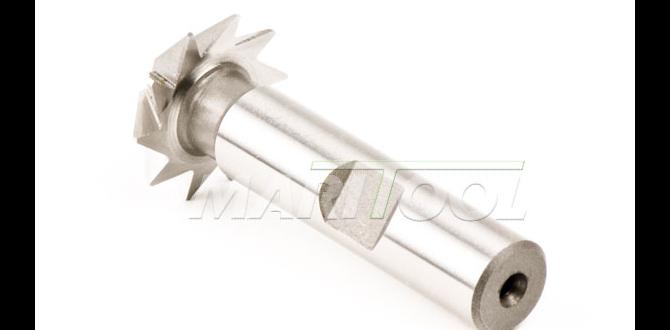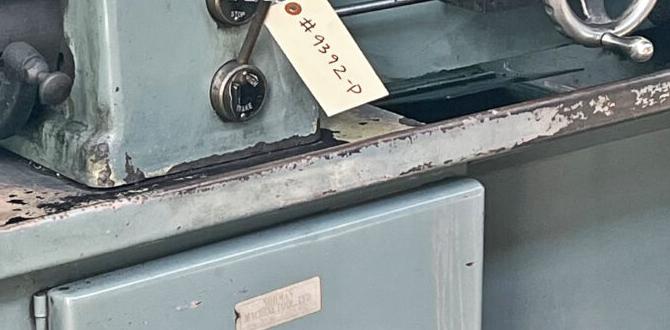Have you ever watched a metal lathe in action? It’s fascinating how these machines turn raw metal into precise parts. One key to their success is the lathe collet system. This clever system holds the metal firmly in place while it spins. Without it, metal lathe operations would be messy and unpredictable.
Imagine trying to carve a statue with a wobbly chisel. That’s how important stability is in metalworking. The right collet can make all the difference. Did you know that some collets hold the metal so securely that they can work with high speeds without losing grip?
In this article, we will dive into the world of lathe collet systems. You will learn how they work and why they are crucial for smooth metal lathe operations. Whether you’re a beginner or a seasoned machinist, understanding this system can help you create better, more accurate projects.
Lathe Collet System: Essential For Metal Lathe Operations Lathe Operations Are Integral To Various Metalworking Processes, Allowing For Precision Shaping And Finishing Of Workpieces. Among The Numerous Tools And Systems Used In Metal Lathes, The Lathe Collet System Stands Out For Its Efficiency And Versatility. Understanding How To Use This System Effectively Can Enhance Productivity And Improve The Quality Of Finished Products. What Is A Lathe Collet System? A Lathe Collet System Is A Specialized Clamping Mechanism Used To Securely Hold Workpieces During Machining Operations. Unlike Traditional Chucks, Which Can Sometimes Cause Damage Or Deformation To The Workpiece, Collets Provide A More Uniform Grip. They Are Designed To Accommodate Various Sizes And Shapes Of Materials, Making Them Ideal For Intricate Metal Lathe Operations. Advantages Of Using A Collet System 1. **Precision Clamping**: Collets Offer Precise Holding Power, Ensuring That The Workpiece Is Centered And Stable During Machining. 2. **Quick Setup**: With Their Ability To Quickly Change Workpieces, Collet Systems Reduce Setup Time, Making Operations More Efficient. 3. **Less Vibration**: The Snug Fit Of The Collet Minimizes Vibrations, Leading To Better Surface Finish And Accuracy. Types Of Collet Systems There Are Several Types Of Collet Systems Tailored For Specific Applications, Including: – **Hex Collets**: Best For Holding Hexagonal Workpieces Securely. – **Round Collets**: Ideal For Cylindrical Materials, Ensuring A Versatile Range Of Operation. – **Step Collets**: Used For Holding Workpieces With Varying Diameters. Applications In Metal Lathe Operations Metal Lathe Operations Encompass A Wide Range Of Tasks Such As Turning, Facing, And Threading. The Lathe Collet System Enhances These Operations By: – **Holding Irregular Shapes**: Collets Can Accommodate Parts Of Various Geometries, Ensuring Holding Confidence. – **Facilitating Repeatability**: If Multiple Identical Parts Are Required, The Collet System Allows For Quick And Consistent Changes Between Workpieces. Conclusion In Conclusion, The Lathe Collet System Is A Fundamental Tool For Anyone Involved In Metal Lathe Operations. Its Combination Of Precision, Versatility, And Efficiency Makes It An Invaluable Asset In Both Professional And Hobbyist Settings. By Implementing A Collet System In Lathe Operations, Users Can Achieve Higher Quality Results While Significantly Reducing Setup And Operational Time.
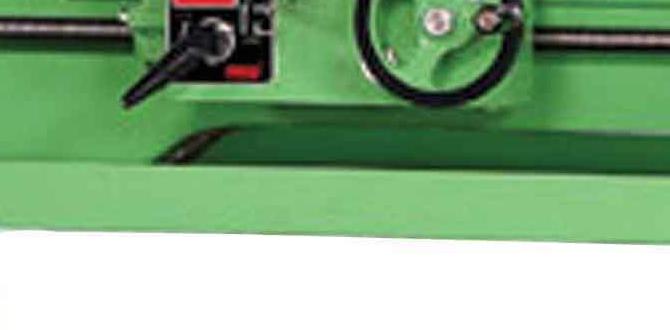
Understanding Lathe Collet Systems in Metal Lathe Operations
Lathe collet systems are key tools for metal lathe operations. They hold workpieces firmly, allowing for precision and accuracy. Imagine trying to carve a tiny statue without a strong grip on your materials. That’s where collets help! They come in various sizes to fit different materials. Knowing how to choose the right collet can make a big difference in your projects. Using these systems correctly can elevate your metalworking skills and make tasks easier.Understanding Lathe Collet Systems
Definition and purpose of collet systems in metal lathes. Key components of a lathe collet system.A collet system holds items tightly in metal lathes. It uses a sleeve—called a collet—that fits snugly around the workpiece. The system makes sure the piece does not slip while being worked on. This ensures accuracy and smooth operation. Key parts of a collet system include:
- **Collet:** The part that grips the workpiece.
- **Chuck:** Holds the collet in place.
- **Nut:** Tightens the collet to secure the workpiece.
Understanding these components helps improve lathe operations.
What is a lathe collet system?
A lathe collet system is a tool that secures objects in a lathe machine for precise work. It keeps items steady to prevent errors during cutting or shaping.
Advantages of Using Collet Systems in Metal Lathes
Increased precision and accuracy in machining operations. Enhanced workholding capabilities and reduced setup time.Using collet systems in metal lathes brings many great benefits. They help make work more precise and accurate, which means better results. With collet systems, you can hold workpieces firmly. This increases safety and reduces setup time. Here are some key advantages:
- Increased precision: Collets grip tighter, leading to fewer errors.
- Quick setups: Changeovers are fast, saving you time.
- Better versatility: Works with different shapes and sizes easily.
What are the main benefits of collet systems?
Collet systems offer better accuracy and faster setup times. Their design allows for smooth operations, which leads to high-quality machining results. This makes them a top choice for many metal lathe operations.
Choosing the Right Collet for Your Metal Lathe
Factors to consider when selecting a collet (size, shape, compatibility). Tips for matching collets to specific materials and operations.Picking the right collet can feel like finding a needle in a haystack. Start with size: make sure it fits your lathe perfectly—too big or too small? Not good! Next, consider shape: some projects need a round shape, while others need something special. Then, check for compatibility with your materials. For instance, steel needs a strong collet, while softer materials like plastic can be easier. Here’s a quick guide:
| Material | Recommended Collet Type |
|---|---|
| Steel | Grip Collet |
| Aluminum | Shrink Fit Collet |
| Plastic | Standard Collet |
Always match your collet to the material and the job at hand. This way, your lathe will run smoother than a squirrel on roller skates!
How to Install and Set Up a Collet System
Stepbystep instructions for installing a collet in a lathe. Best practices for achieving optimal clamping force and alignment.Installing a collet in your lathe can be simple. Follow these steps to ensure a strong setup:
- First, clean the lathe spindle and collet.
- Next, insert the collet into the spindle. Make sure it’s straight.
- Screw down the collet nut gently. Be careful not to over-tighten.
- Check for alignment. The tool should sit straight in the collet.
To achieve optimal clamping force:
- Use appropriate collet sizes for your tools.
- Ensure clean, dry surfaces for better grip.
- Tighten the collet nut firmly, but don’t go too far.
How do you secure a collet?
To secure a collet, align it properly with the spindle and tighten the nut firmly. This keeps tools in place.
Maintenance and Care for Lathe Collet Systems
Routine maintenance tips to prolong collet lifespan. Common issues and troubleshooting techniques.Taking care of your lathe collet system keeps it working smoothly. Regular check-ups are crucial, like those visits to the dentist, but way less scary! Always clean the collets after use to remove debris. This little habit can double the lifespan of your collets. Signs of trouble? If they wobble or don’t hold tight, it’s time to troubleshoot.
| Common Issues | Troubleshooting Tips |
|---|---|
| Wobbling collet | Check for dirt or bent parts |
| Poor grip | Look for wear and tear |
Remember, a happy collet is a productive collet! Keep it clean, check it often, and it will reward you with precision.
Comparing Collet Systems to Other Workholding Methods
Analysis of collet systems vs. chucks and vises. When to choose collets over alternative workholding solutions.Collet systems and other workholding methods, like chucks and vises, each have unique features. Collets grip material tightly. This makes them ideal for precise tasks. Chucks are better for larger pieces but may not hold as securely. Vises can hold different shapes but may not be the best for small parts. Here’s when to choose collets:
- Precision work: Collets give strong and even pressure.
- Consistency: They keep the size accurate.
- Speed: Easy to change out materials quickly.
In the end, if you need accuracy and speed, choose collets!
Why use collets over chucks and vises?
Collets provide better holding power for small parts. They help avoid slips and offer precision. So, for detailed work, collets shine over chucks or vises.
Case Studies: Successful Applications of Collet Systems in Industry
Examples of industries effectively utilizing collet systems. Testimonials from professionals on the benefits of collet usage.Collet systems are like the superheroes of the metalworking world! Take the automotive industry, for instance. Many shops use collet systems for quick changes and precise operations. This saves them valuable time and money. One satisfied machinist said, “Switching to collet systems made my job feel like a walk in the park!”
In aerospace, collets help create parts that fit like puzzle pieces. Imagine making engines that power airplanes! Here’s a fun fact: shops report a 30% boost in productivity when using collet systems.
| Industry | Benefit |
|---|---|
| Automotive | Faster setups |
| Aerospace | High precision |
Collet systems are not just tools; they are game-changers! These success stories prove their worth across different fields.
Conclusion
In summary, a lathe collet system is essential for metal lathe operations. It securely holds workpieces for precise machining. Understanding its parts and how to use it will improve your skills. You can practice by setting up a collet and experimenting with different materials. For more details, check out beginner guides online to enhance your learning!FAQs
Sure! Here Are Five Questions Related To The Lathe Collet System And Metal Lathe Operations:Sure! Here are some simple answers about metal lathes and collets. 1. A lathe is a machine that spins metal to make things round. 2. A collet is a special tool that holds the metal tightly. 3. You can change the collet to hold different sizes of metal. 4. Metal lathes can help you make parts like screws and bolts. 5. Always be safe when using a lathe by wearing protective gear.
Sure! Just tell me what question you have in mind, and I’ll do my best to answer it.
What Are The Advantages Of Using A Collet System Over Traditional Chucks In Metal Lathe Operations?Using a collet system is great because it holds your metal pieces more tightly. This means they won’t move around while you work. Collets can also hold different shapes, unlike traditional chucks that only grip round things. Plus, it’s quicker to change pieces, saving you time when you’re busy. Overall, collet systems make your metal work easier and more precise!
How Do You Properly Size A Collet For Different Workpiece Diameters When Using A Lathe?To size a collet for your workpiece, first, measure the diameter of the workpiece. Then, choose a collet that matches that size closely. If your workpiece is too small, use shim rings to make it fit. For bigger pieces, select a larger collet that can hold it securely. Always double-check sizes before you start working!
What Are The Various Types Of Collets Available For Lathes, And How Do They Differ In Application?There are several types of collets for lathes. A common type is the ER collet, which holds different shapes and sizes. Another type is the 3-jaw collet, perfect for gripping round objects tightly. You can also find 5C collets, which are great for holding various tools. Each type helps us work with different materials and shapes in our projects.
How Do You Maintain And Care For Collets To Ensure Their Longevity And Precision In Metalworking?To take care of collets, you should clean them often. Use a soft cloth to wipe off dirt and oil. Check for any damages like cracks. Always store them in a dry place to keep them safe. This way, they will last longer and work better for you!
What Safety Precautions Should Be Observed When Using A Lathe With A Collet System?When using a lathe with a collet system, you must wear safety goggles to protect your eyes. Always keep your hair tied back and wear tight clothing to avoid getting caught. Make sure the lathe is turned off before changing the collet. Keep your hands clear of the spinning parts while it is running. Finally, stay focused and do not distract others while they are working.

